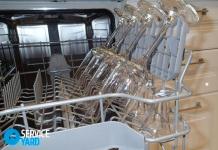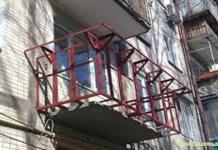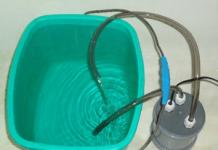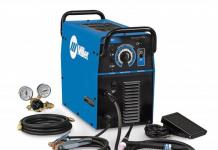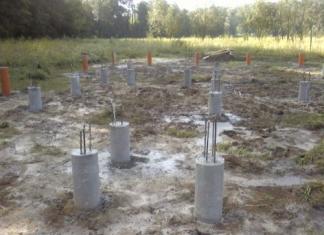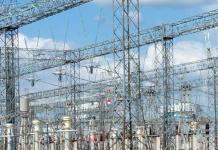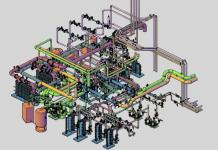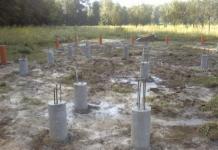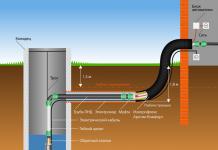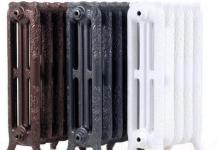Electricity is an integral part of our life. Every day, we use many household electrical appliances without thinking, not to mention production. Where does the energy we need come from? Even children know the answer to this question: it is produced by power plants. But not everyone knows how it comes from the power plant to us, consumers. We will try to answer this question in our article.
So, let's start with power plants. Everyone knows the main types of power plants: nuclear power plants, hydroelectric power plants, thermal power plants. Many have probably heard about the existence of diesel generator sets and mini power plants, which are increasingly being used on construction sites, as protection against blackouts in hospitals, and can also provide electricity to a private house, etc. In Europe, wind and solar energy are also used to generate electricity. Scientists around the world are also working on alternative types of electricity, such as fusion reactions, biomass power plants.
In our country, today the main sources of electricity are nuclear power plants, hydroelectric power plants and thermal power plants. More than half of the electricity produced by thermal power plants. Most often, such power plants are located in places where fuel is extracted. In cities, combined heat and power plants can also be used, which provide the city not only with electricity, but also with hot water and heat. The cheapest electricity is produced by hydroelectric power plants.
Nuclear power plants are the most modern. One of the most important advantages is the fact that they are not tied to the source of raw materials, and therefore can be placed almost anywhere. Nuclear power plants also do not pollute the environment, provided that all natural factors are taken into account and the requirements for their construction are met.
But here we have a power plant that produces electricity. What happens next? And then the electricity from the electrically removable tires is supplied to the electrical part of the power plant, which can be open, closed and combined. In the electrical part there is a control room for power plant control, an automated process control system (APCS), switching devices, relay protection, instrumentation and alarms, high-voltage step-up and step-down transformers, high-voltage circuit breakers, busbars and autotransformers. After the conversion of energy, electricity is supplied to a high-voltage power line (VTL). Power transmission lines designed to transport electricity over long distances must have a large capacity and low losses, and consist of wires, poles, fasteners, lightning protection cables, and auxiliary devices. According to their purpose, power transmission lines are divided into ultra-long, trunk and distribution. The main elements of overhead power lines are metal poles, which are installed at a certain distance from each other. They are anchor, intermediate and angular. Anchor supports are installed at the beginning and end of the power line, as well as at the crossing points of engineering structures or natural barriers. Intermediate supports are installed on straight sections and are designed to support wires with an allowable sag of 6-8 meters in populated areas, and 5-7 meters in non-populated areas. Corner supports are installed at the angles of rotation of the power line. Special transposition poles are installed to change the order of arrangement on the poles, as well as to branch the wires from the main line of the overhead power transmission line. For the transmission of electricity in high-voltage power lines, uninsulated wires are used, made of aluminum and steel-aluminum of the following grades: AN, AZh, AKP (aluminum) and VL, AS, AKS, ASKP, ASK (steel-aluminum). The wires are attached to the poles with the help of supporting or tension insulators, which are mounted on the pole in a suspended way, and mounting fittings. In turn, insulators are porcelain, coated with glaze, glass, tempered glass, and polymer, from special plastics. To protect the power line from lightning, lightning protection cables are pulled on the poles, arresters are installed, and the poles are grounded. Since the line usually runs for a long distance, intermediate substations with step-up transformers are used to avoid voltage losses.
For further distribution of electricity, distribution substations are connected to the main overhead transmission lines, which, in turn, distribute electricity to step-down substations. When distributing electricity from the substation to the PTS, 2 types of cable laying can be used: overhead and underground. In air laying, aluminum or steel-copper bare wires are usually used, which are suspended on supports. For underground laying, a power cable with copper or aluminum conductive conductors and armor is used, which provides reliable protection against mechanical stress. Cables of this type include brands designed for operation at voltages up to 35 kV, for example, either (6-10 kV) or (10-35 kV). If the transformer substation is located at a great distance, then the use of a power cable will not be economically viable, in which case an air laying is used.
From the step-down substation along the power lines, energy is distributed between the PTS, which are divided into mast and kiosk (through and dead-end). Complete transformer substations carry out voltage reduction from 10 (6) to 0.4 kV alternating current with a frequency of 50 Hz and are designed to supply electricity to private houses, individual settlements or small industrial facilities. In mast transformer substations, the input and output of the cable is carried out using overhead lines. KTP kiosk type serve for the same purposes, but are installed in the simplest concrete platform and have a serious advantage - they allow input and output, both by air and underground.
For the removal of overhead lines, self-supporting aluminum insulated SIP wires are used, which are suspended on wooden or concrete supports using mounting fittings. This method of laying a distribution line is used in private sectors, garage cooperatives or where it is necessary to supply a large number of consumers located at some distance from each other. For laying underground lines, a power cable with aluminum or copper conductors, insulated from various materials, shielded, armored, with or without a protective cover is used. Depending on the laying method, different brands of cable can be used. For laying in special double-walled corrugated pipes, power cables without a protective cover and armor, such as AVVG or. For laying in trenches, cables with armor and protective covers are used, which have good protection against physical and mechanical impact. These are cables like and (with armor and protective cover) or and (with armor without protective cover). In addition, depending on the nature of the stray currents, power cables with various types of screens can be used, which are designed for laying both in trenches and in protected pipes. These cables include brands or.
From the transformer substation, electricity is transmitted through selected wires to distribution points, which are located in specially designated rooms (panel boards). Distribution devices are installed in the control rooms, which not only provide power transmission to apartments, but also supply floor and emergency lighting, elevators, ventilation, air conditioning and security systems. Distribution from the switchboard to floor switchboards is carried out using cables, which, according to fire safety conditions, must not spread combustion and have low smoke and gas emission rates. Such brands of cables include (aluminum conductors), (copper conductors). For laying the trunk line, special fastening brackets are also used, which ensure the safety of the cable for the entire service life. In addition, a bus duct can be used to supply power from the switchboard to floor shields, which has a number of advantages compared to a cable trunk line. These include ease of installation (sections are assembled and mounted in a niche without any problems), smaller dimensions compared to a cable line (sections consist of copper or aluminum tires, which are stripped by a metal case), ease of further operation. And, finally, from the floor boards, electricity is supplied to the meter or the metering and distribution board of the apartment.
Ten times a day, turning on and off the light and using household appliances, we do not even think about where the electricity comes from and what its nature is. It is clear, of course, that according to power lines ( power line) it comes from the nearest power plant, but this is a very limited idea of \u200b\u200bthe world around us. But if electricity generation around the world stops for at least a couple of days, the death toll will be measured in hundreds of millions.
How is current generated?
From the physics course we know that:
- All matter is made up of atoms, the smallest particles.
- Electrons revolve in an orbit around the nucleus of an atom, they have a negative charge.
- The nucleus contains positively charged protons.
- Normally, this system is in a state of equilibrium.
But if at least one atom loses only one electron:
- Its charge becomes positive.
- A positively charged atom will begin to attract an electron towards itself, due to the difference in charges.
- To get the missing electron for yourself, it will have to be "plucked" from someone's orbit.
- As a result, one more atom will become positively charged and everything will be repeated, starting from the first point.
- Such cyclicity will lead to the formation of an electrical circuit and the linear distribution of current.
So from the point of view of nuclear physics, everything is extremely simple, the atom is trying to get what it lacks the most, and thus starts the reaction .

The "golden age" of electricity
Man adapted the laws of the universe to his needs relatively recently. And it happened about two centuries ago, when an inventor named Volt developed the first battery capable of maintaining a charge of sufficient power for a long time.
Attempts to use the current for their own benefit have an ancient history. Archaeological excavations have shown that even in Roman sanctuaries, and then in the first Christian churches, there were handicraft "batteries" made of copper, which gave minimal voltage. Such a system was connected to the altar or its enclosure, and as soon as the believer touched the structure, he immediately received “ divine spark". Rather, this is the invention of one craftsman than widespread practice, but the fact is curious, in any case.
The twentieth century has become power boom:
- Not only new types of generators and batteries appeared, but also unique concepts for the production of this very energy were developed.
- For several decades, electrical appliances have tightly entered the life of every person on the planet.
- There are no countries left, except for the least developed ones, where power plants and held power lines.
- All further progress was based on the possibilities of electricity and the devices that work from it.
- The era of computerization has made a person addicted to current, in the truest sense of the word.

How to get electricity?
To imagine a person as a drug addict who regularly needs a “life-giving dose of electricity” is a little naive, but try to completely de-energize your home and live in peace for at least a day. Despair can make you remember the original ways of extracting current. In practice, this is of little use to anyone, but maybe a couple of Volts will save a life or help impress a child:
- Dead battery phone can be rubbed on clothes, jeans or a woolen sweater will do. Static electricity won't last long, but it's at least something.
- If there is nearby sea water, you can pour it into two jars or glasses, connect them with a copper wire, after wrapping both ends of it with foil. Of course, for all this, in addition to salt water, you will also need containers, copper and foil. Not the best option for extreme situations.
- Much more realistic iron nail and a small brass instrument. Two pieces of metal should be used as the anode and cathode - a nail in the nearest tree, copper in the ground. Pull any thread between them, a simple design will give about one Volt.
- If use precious metals- gold and silver, it will be possible to achieve greater tension.

How to save electricity?
There can be various reasons for saving electricity - a desire to save the environment, an attempt to reduce monthly bills, or something else. But the methods are always about the same:
It is not always necessary to severely limit yourself in something in order to reduce costs. There is another good tip - unplug all appliances while you are not using them.
The refrigerator, of course, does not count. Even being in "standby" mode, the equipment consumes a certain amount of electricity. But if you think even for a second, you can come to the conclusion that you don’t need almost all the devices for most of the day. And all this time they keep burning your electricity .
Modern technologies are also aimed at reducing the overall level of electricity consumption. What are at least worth energy saving light bulbs, which can reduce the cost of lighting a room, five times as much. The advice to live by "sundial" may seem wild and absurd, but it has long been proven that artificial lighting increases the risk of depression.

How is electricity generated?
Going into the scientific details:
- The current appears due to the loss of an electron by an atom.
- A positively charged atom attracts negatively charged particles to itself.
- Another atom loses its electrons from orbit and history repeats itself.
- This explains the directed movement of the current and the presence of a propagation vector.
But in general electricity is generated by power plants. They either burn fuel, or use the energy of splitting atoms, or maybe even use natural elements. We are talking about solar panels, windmills and power plants.
The resulting mechanical or thermal energy, due to the generator, is converted into a current. It accumulates in batteries and enters every house through power lines.

Today, it is not necessary to know where electricity comes from in order to enjoy all the benefits that it provides. People have long moved away from the original essence of things and slowly begin to forget about it.
Video: where does electricity come from?
This video will clearly show the path of electricity from the power plant to us, where it comes from and how it enters our house:
Electricity is perhaps the most significant discovery in human history. A previously unknown force has always existed and a vivid example of this is lightning. Faced with this phenomenon, scientists wondered where electricity came from and what is it?
The study of electricity continued for almost 2,700 years. From the very moment when the ancient philosopher Thales of Miletus discovered the attraction of small objects by amber rubbed on a piece of wool. Today we know that electricity is transmitted by electrons - small "balls" running through wires.
Experiment: put small pieces of paper on the table, and then take a simple plastic pen and rub it vigorously on a piece of wool or hair. By bringing the pen close to the pieces of paper, they will simply begin to stick to it. This is the attraction that arose as a result of a static charge.
In the process of research, scientists wondered where electricity comes from, and found more and more new sources. In nature, atmospheric electricity is static. The tiny droplets of water that make up clouds rub against each other. As a result, the friction builds up a charge and eventually discharges into each other or into the ground in the form of lightning.
electrostatic machine
The principle of its operation is based on the same friction, and modern electrostatic machines are demonstrated in physics lessons. The first such machine appeared in 1663. Then scientists noticed that when glass is rubbed against silk, one charge arises, and when resin rubs against wool, another charge arises. Opposite charges were then called "glassy and resinous electricity". Today we know that these are positive (+) and negative (-) charges.
They accumulated these charges in a Leyden bank. It was the first capacitor, which was a glass jar wrapped in foil and filled with salt water. Water accumulated one charge, and foil - the second. When the contacts approach, a spark jumps between them, representing a small model of lightning.

Today it is a conventional battery - a source of direct current. The electric current in a battery is produced by a chemical reaction. You can also get it at home. Dip a simple nail into a glass of vinegar, and copper wire next to it. That's all - the battery is ready. The first galvanic cell was created by the outstanding physicist Volt. He took the zinc and silver circles and, alternating them in turn, arranged them with pieces of paper soaked in salt water. However, the clue for Volt was the experiment of Professor of Medicine Galvani. The scientist, studying anatomy, hung the frog's foot on a copper hook, and when he touched it with a steel object, the foot twitched. It took more than 10 years to unravel the mystery of where electricity came from, but in the end, Volt determined that it arose in the process of the interaction of different metals.

Generator
The first generator was created in 1831 by the famous physicist Faraday. The principle is based on the relationship between electricity and magnetism. The scientist wound a wire around the coil and when he moved a magnet inside the coil, an electric current appeared in the winding. The same principle is preserved in modern dynamos. Such devices are installed on the front wheel of the bicycle and connected to the headlight. There is a coil in the body, and a permanent magnet rotates in the middle. Modern industrial generators operating in power plants are more complex. In them, the permanent magnet was replaced with an excitation coil, that is, an electromagnet, but otherwise the same principle discovered by Faraday works.

As already mentioned, electricity is transmitted by electrons. In order for the electrons to start moving along the wires, they need additional energy. In simple generators, they get this energy from a magnetic field, but in solar panels, they get this energy from light. Small particles of light - photons, fall on a special matrix, which, under the influence of light, begins to give up electrons and an electric current arises.

modern electricity
Today it is difficult to imagine the existence of mankind without electricity. In addition, with the growth of technological capacities, one of the topical issues is where to get electricity from. Therefore, many different power plants are being built and operated in the world. Apart from the sun, all the rest produce electricity with the help of generators, but these generators rotate due to various forces.
The principle of operation of various types of power plants:
- hydroelectric power station - rotation occurs due to the passage of water flow through the turbine (blades);
- wind farm - rotation occurs due to the wind spinning the propeller blades;
- thermal power plant - fuel is burned, heating water and turning it into steam. In turn, pressurized steam passes through the turbine and rotates the blades, and the rotation is transferred to the generator;
- nuclear power plant - the principle is the same as that of a thermal one, only the water is heated not by fuel combustion, but by a delayed nuclear reaction.

This is where electricity comes from in our house. True, on its way, fast-moving electrons pass many more different installations, power stations and substations, where voltage is converted, power is distributed, etc. It is easier to explain to children where electricity comes from, saying that it is an invisible force obtained from nature itself - the flow of rivers, puffs of wind, fire. At the same time, it is imperative to warn that electric current is dangerous and does not forgive pranks, so it is better to stay away from sockets.
Zero
In an ordinary socket there are 2 contacts - phase and zero. Where does zero come from in electricity if plus and minus are phase variables? Each generator in the power plant has 3 windings and each generates a separate phase. Phases are denoted by Latin letters A, B and C. The ends of all 3 windings are closed, and the second ends are phase sources. The closing point of the windings is zero. Thus, the current from any of the windings passing through the load returns to the zero point. Additionally, in the panel house, zero is grounded, and the circuit is called "deeply grounded neutral". With an overhead power line, the neutral wire is grounded on the supports. This is done so that in the event of a short circuit, the current reaches a maximum sufficient to trigger the shut-off automation. In addition, if a break occurs on the main neutral wire, the earth will work as a collector and no accident will occur.
In some industrial electrical installations, an isolated neutral is performed, as this is provided for by the operational features of the installation itself. In houses, zero must be grounded.
The life of a modern person is organized in such a way that its infrastructure support involves many components with different technical and functional properties. These include electricity. An ordinary consumer does not see and does not feel exactly how it performs its tasks, but the end result is quite noticeable in the work of household appliances, and not only. At the same time, questions regarding where electricity comes from remain unsolved in the minds of many users of the same household appliances. To expand knowledge in this area, it is worth starting with the concept of electricity as such.
What is electricity?
The complexity of this concept is quite understandable, since energy cannot be described as an ordinary object or phenomenon accessible to visual perception. At the same time, there are two approaches to answering the question of what electricity is. The definition of scientists says that electricity is a stream of charged particles, which is characterized by directional movement. As a rule, particles are understood as electrons.
In the energy industry itself, electricity is more often considered as a product generated by substations. From this point of view, the elements that are directly involved in the process of formation and transmission of current are also important. That is, in this case, we consider an energy field created around a conductor or other charged body. To bring this understanding of energy closer to real observation, one must deal with the following question: where does electricity come from? There are different technical means for the production of current, and all of them are subordinated to one task - the supply of end consumers. However, before the moment when users can provide their devices with energy, it must go through several stages.

Electricity generation
To date, about 10 types of stations are used in the energy sector, which provide electricity generation. This is a process, as a result of which a certain type of energy is converted into a current charge. In other words, electricity is generated during the processing of other energy. In particular, at specialized substations they use thermal, wind, tidal, geothermal and others as the main working resource. Answering the question of where electricity comes from, it is worth noting the infrastructure that each substation is provided with. Any power generator is provided with a complex system of functional nodes and networks that allow you to accumulate the generated energy and prepare it for further transmission to distribution nodes.

Traditional power plants
Although in recent years, trends in the energy sector have been changing rapidly, it is possible to single out the main ones working according to classical principles. First of all, these are thermal generation facilities. The development of the resource is carried out as a result of combustion and subsequent transformation of the allocated. At the same time, there are different types of such stations, including heating and condensing. The main difference between them is the ability of objects of the second type to also generate heat flows. That is, when answering the question of where electricity comes from, one can also note stations that simultaneously produce other types of energy. In addition to thermal production facilities, hydro and nuclear power stations are quite common. In the first case, it is assumed from the movement of water, and in the second - as a result of the fission of atoms in special reactors.

Alternative energy sources
It is customary to refer to this category of energy sources as solar rays, wind, subsoil, etc. Especially common are various generators focused on the accumulation and conversion of solar energy into electricity. Such installations are attractive in that they can be used by any consumer in the volumes required to supply his home. However, the high cost of equipment, as well as nuances in operation, due to the dependence of working photocells on
At the level of large energy companies, wind alternative sources of electricity are actively developing. Already today, a number of countries are using programs for the gradual transition to this type of energy supply. However, there are some obstacles in this direction, due to the low power of generators at a high cost. A relatively new alternative energy source is the natural heat of the Earth. In this case, the stations convert the thermal energy received from the depths of underground channels.

Electricity distribution
After the generation of electricity, the stage of its transmission and distribution begins, which is provided by energy sales companies. Resource providers organize the appropriate infrastructure, which is based on electrical networks. There are two types of channels through which electricity is transmitted - overhead and underground cable lines. These networks are the ultimate source and the main answer to the question of where electricity comes from for various needs of users. Supplier organizations are laying special routes for the distribution of electricity, using different types of cables.
Consumers of electricity
Electricity is required for a wide variety of tasks in both domestic and industrial sectors. A classic example of the use of this energy carrier is lighting. Today, however, electricity in the home serves to power a wider range of appliances and equipment. And this is only a small part of society's needs for energy supply.

This resource is also required to maintain the operation of the transport infrastructure: to maintain the lines of trolleybuses, trams and metro, etc. Separately, it is worth noting industrial enterprises. Factories, combines and processing complexes often require the connection of huge capacities. We can say that these are the largest consumers of electricity, using this resource to ensure the operation of technological equipment and local infrastructure.
Electricity facilities management
In addition to the organization of the electric grid economy, which technically provides the possibility of transmission and distribution of energy for end consumers, the operation of this complex is impossible without control systems. To implement these tasks, suppliers use operational dispatch centers, whose employees implement centralized control and management of the work of the electric power facilities entrusted to them. In particular, such services control the parameters of networks to which consumers of electricity are connected at different levels. Separately, it is worth noting the departments that perform network maintenance, preventing wear and tear and repairing damage in certain sections of the lines.

Conclusion
Over the entire period of its existence, the energy industry has undergone several stages of its development. Recently, there have been new changes due to the active development of alternative energy sources. The successful development of these areas already today makes it possible to use electricity in the house, received from individual household generators, regardless of the central networks. However, there are certain difficulties in these sectors. First of all, they are associated with financial costs for the purchase and installation of appropriate equipment - the same solar panels with batteries. But since the energy generated from alternative sources is completely free, the prospects for further advancement of these areas remain relevant for different categories of consumers.



